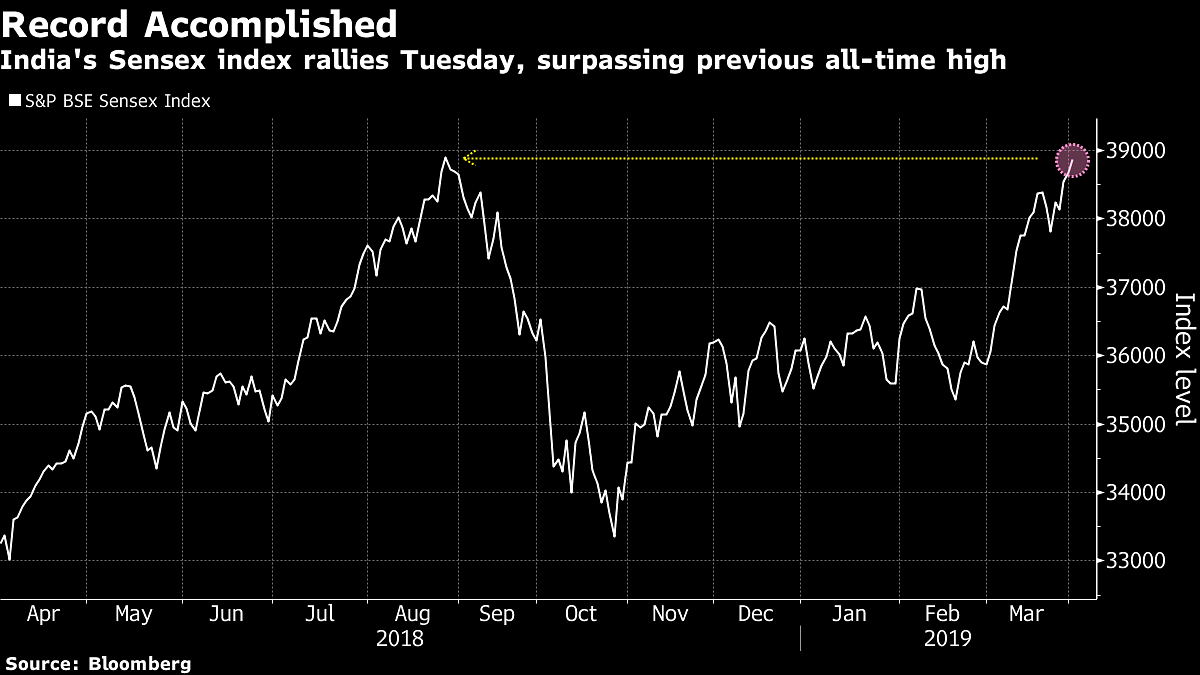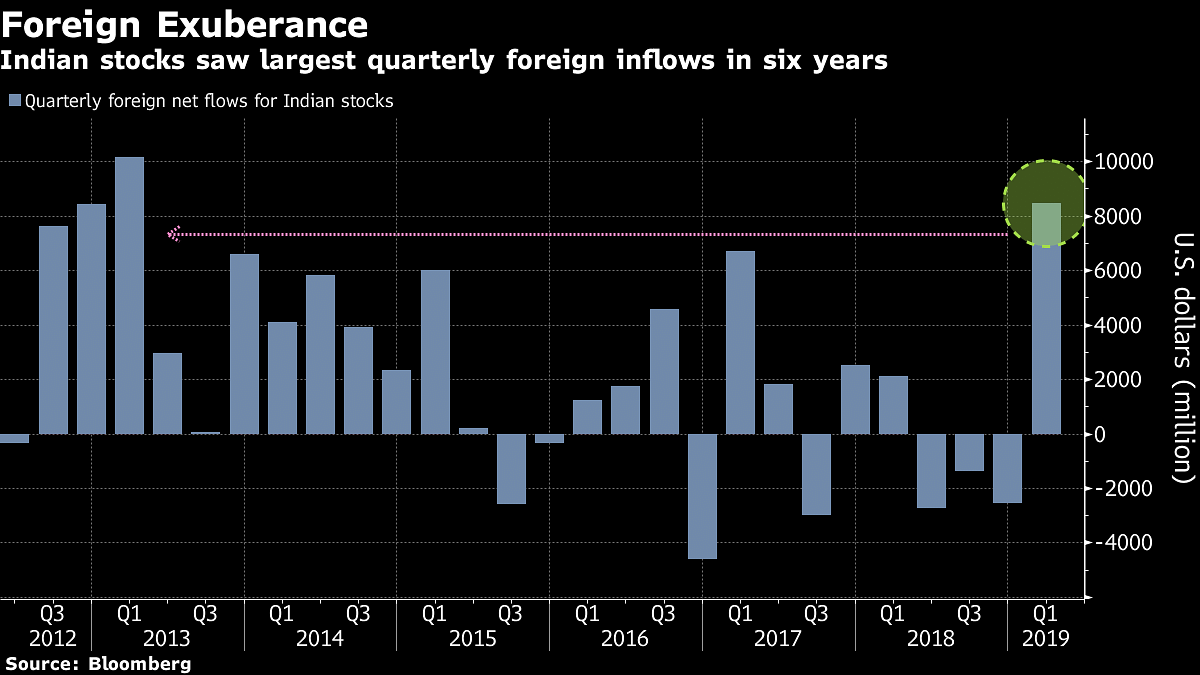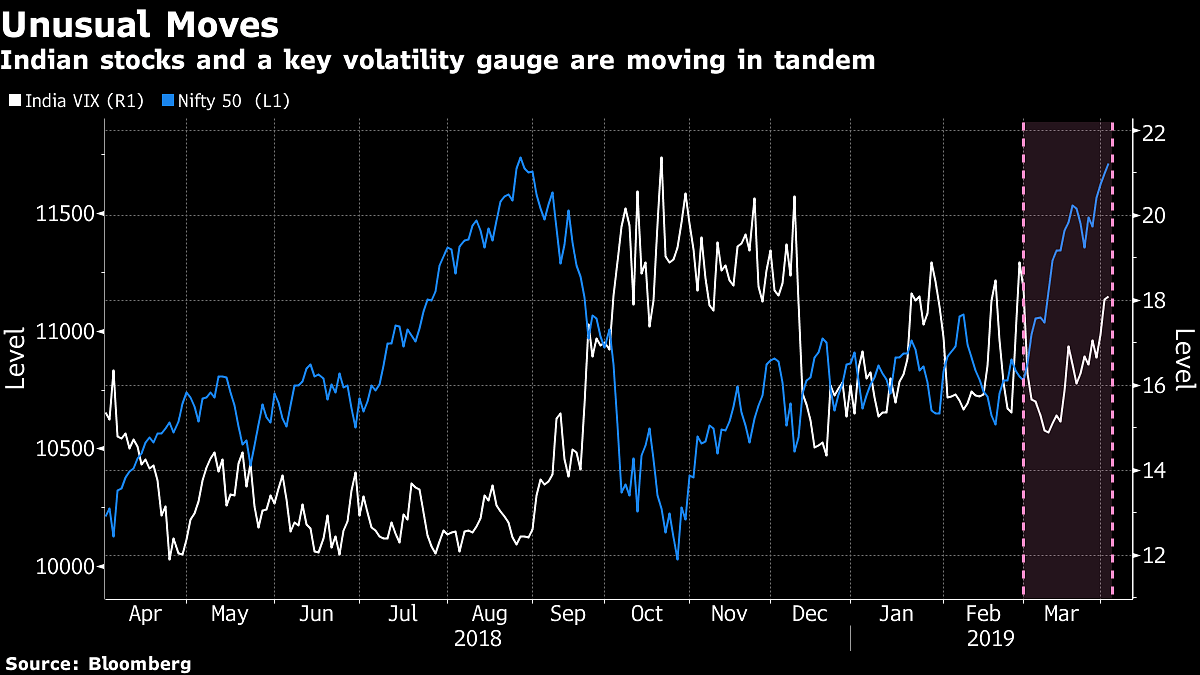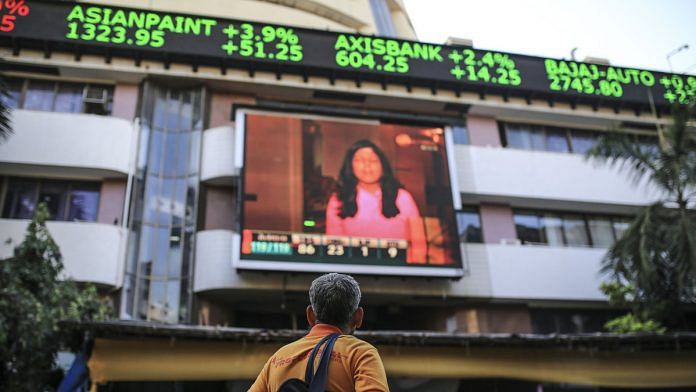Mumbai/Singapore: The biggest quarterly foreign inflow in six years. About $370 billion in value gained. And now, India’s stock market just hit a record high — its first in seven months.
The equity benchmark index for the world’s second-largest emerging market rose 0.5 percent Tuesday, closing above the 38,896.63 level that was required to make the milestone official. India is the first among markets valued at more than a $1 trillion to hit a peak this year.
After languishing in their worst run of losses in almost eight years, Indian equities posted the world’s biggest rally in the last month. Worries over rising oil prices, election uncertainty and tensions over Kashmir have faded. Instead, expectations that Prime Minister Narendra Modi will get re-elected, bets that company profits will recover and a dovish shift in central-bank policy in both the U.S. and India have made investors turn positive.
The icing on the cake was bullish views from strategists at foreign research firms. Last week, BNP Paribas SA analyst Manishi Raychaudhuri upgraded Indian stocks to overweight, citing stability in corporate-profit growth and indicating that banks’ asset-quality problems are now seen as “a thing of the past.” This came after Goldman Sachs Group Inc. said that stocks will rally in the lead-up to the vote and raised equities to the equivalent of a buy rating.
There are certainly more events for investors to either buy or sell India stocks for the rest of the year: Results from India’s general elections next month, hints on where corporate profits will go, U.S.-China trade talks and big moves in oil prices.
“The first event is the largest democratic elections globally and in that sense, investors will be looking forward to the formation of a stable government,” said Chockalingam Narayanan, head of equity research at BNP Paribas Asset Management Co. in Mumbai.
Foreign Money
Foreign inflows have seen a resurgence as global funds purchased a net $8.4 billion of Indian shares in the first three months of the year. That puts the country on track for the biggest annual flood of overseas capital since 2014, when Modi first became prime minister and the S&P BSE Sensex Index hit 54 record highs.
General elections tend to be an “important influencer” of short-term returns and foreign flows into the market, BNP’s Raychaudhuri said in his note. If investors get a “market-friendly” government, the overseas investment euphoria will continue for a month or two and will then fade by the third month after the vote, he said.
Some say this influx may have been too rapid in such a short time frame.
“We believe this pace of inflows will moderate,” said Sampath Reddy, chief investment officer at Bajaj Allianz Life Insurance Co. “Last month was exceptionally good, but that can’t be the run rate for the months ahead.”
Neelkanth Mishra, India equities strategist at Credit Suisse Group AG in Mumbai, says such inflows into the nation’s stocks may not be sustainable, even if the global economic momentum turns positive as China stabilizes and central banks don’t change their stance. That’s because Credit Suisse doesn’t see growth in India recovering “any time soon as monetary tightness persists,” according to a note.
Taking Cover
For the past three weeks, both the stock market and a gauge tracking its volatility rose in tandem, a rare occurrence that indicates signs of hedging. The NSE Nifty 50 Index and India VIX Index, which tend to go opposite ways, have moved in the same direction five weeks already this year, on track for the highest proportion since 2014.
Not everyone’s concerned.
“The market is positively biased and the momentum is likely to continue on the back of expectations of a stable government coming to power,” said Jay Thakkar, head of technical research at Mumbai-based Anand Rathi Share & Stock Brokers. “We expect the NSE Nifty 50 to be in a range of 11,200-12,500 over the next three to six months with intermittent sessions of volatility in the run up to the elections.”
Also read: From best to worst, India’s stock market sets off alarm bells



